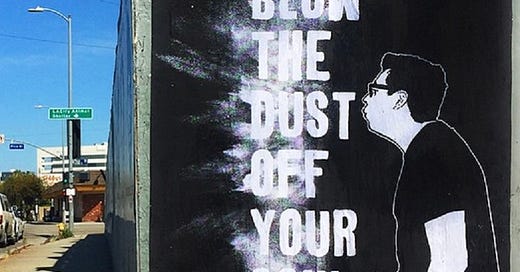How to Grow a Minister, Part 3
The final installment, where we give ourselves to love
After posting the previous installment to this series, I had to take a week off. My heart still aches when I think about some of the pain of being a full-time solo parish minister. The ego-driven form of ministry that I was taught, tried to emulate, and ultimately failed at said the problem was me. And in some ways, it was. I tried to fit into the minster role that was outlined for me. And the harder I tried, the more burnt out I became.
I was lucky with my congregation, though. They had also been told they weren’t living up to the ideal. And I won’t go into the history of that particular congregation, because it is their story to tell. But I can say this: they are wonderful people. And their history is no worse than any other congregation. They were good to me and I loved being their minister.
But the truth is that caring for and nurturing a minister has become a lost art. In the 1950s Americans understood where church fit into society and culture. Most families belonged to a church and attended regularly. The minister’s role (and his wife’s, by the way) was clear. And congregations knew how to support this system. By the turn of the century all of this had changed.
Yet most congregations still believe that if they work hard enough, have the right person in the pulpit, create worship and provide programs and show up every Sunday, the heydays will return. All the while there are fewer and fewer volunteers, less and less money, and the stalwart members are rapidly aging. Churches have been dying for years. The pandemic sent this into overdrive. Nowadays, most parish ministers are there to provide hospice care, merely helping a congregation die comfortably. And no one is caring for the minister.
Do congregations know this? Most of them don’t seem to. Outside of a handful of seminary classes and think pieces, no one admits that churchgoing is in its death throes, and that most congregations will not survive. Instead, churches preoccupy themselves with minor squabbles and power struggles, stressing out their volunteers and burning out their ministers, in a vain attempt to stay vital. Most are not open to change because familiarity is at the heart of church life.
And as congregations age, pastoral care needs increase, volunteerism lags, and ministers are expected to do more and more. And then there is the internet, which in the last decade has added an entirely new set of skills to the ministerial resume. Clergy and religious professionals must stay relevant not just in-person but virtually, too. It’s too much for one, solo, full-time minister to do.
BUT HERE IS THE THING! (Finally…)
When my son was young and I was stressing about how he wasn’t hitting his milestones or how I’d messed up some critical moment of his childhood or how I was missing it, whatever it was, I wasn’t awake enough somehow. Not doing it right. Some gorgeous soul would invariably say “All you have to do is love him.” And I would remember the whole point of this parenting endeavor: to create more love.
That’s all we are here to do. As the churched and unchurched, as parents and grandparents, as humans. In whatever arena we find ourselves. For those of us who go to church, we go to remember: we are here to spread the good news of love by creating more love in whatever way we are able.
When church life aims for anything else, we fail. It is difficult to move away from those hard metrics of success, of membership numbers and pledge money raised and babies in the nursery. And of course a growing church can be a lot of fun. But it is also a lot of work. And if it isn’t creating more love, it isn’t sustainable.
The two questions congregations and ministers can ask themselves as they build community together: 1. Is it loving? And 2. Is it sustainable?
Solo, full-time ministry where the minister does a little bit (and usually a lot) of everything: not sustainable. Wondering whether the minister is “giving you your money’s worth”: not loving.
Shared ministry is sustainable. A living wage and healthcare, without question or condition, is loving.
Creating congregations of deep faith, strong connections, open minds and truly open hearts… this is loving and sustainable. Prioritize caring for one another and caring for ministers. Make it your mission to go deeper into your faith, no matter how many members are sitting in the pews. Build relationships with other congregations and share resources, share burdens. Prioritize people.
The world outside our congregations grows faster and more divided and more chaotic by the day. Inside our congregations we have the opportunity to do it differently. It’s our chance to practice loving radically. We gather together each week and we say, here in this place we hold love as our guiding star, so that when we leave this place we won’t lose sight of it. And even as we age, even as we change and this very place changes into something completely different, we will know ourselves by our love. We will recognize that star.
May you give yourself to love this week and know it is your purpose and your inheritance. May you let go of what needs releasing and allow new life to emerge. It’s a tragedy to witness to the death of what was. But it is a blessing to be able to be a part of nurturing new life and love into this world. Which in the end, is what this whole damn life is all about.





